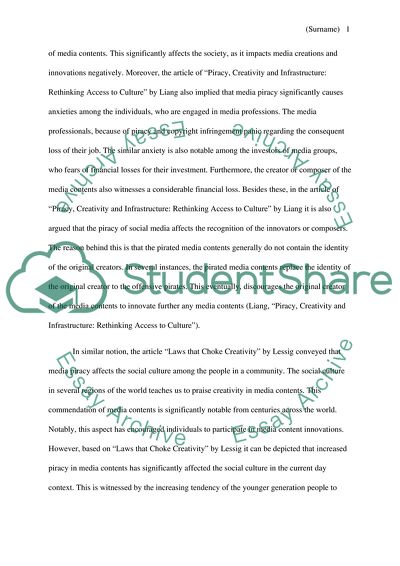Cite this document
(Piracy, Creativity and Infrastructure: Rethinking Access to Culture by Article Example | Topics and Well Written Essays - 1250 words, n.d.)
Piracy, Creativity and Infrastructure: Rethinking Access to Culture by Article Example | Topics and Well Written Essays - 1250 words. https://studentshare.org/media/1870208-counterargument-on-media-piracy-for-or-against
Piracy, Creativity and Infrastructure: Rethinking Access to Culture by Article Example | Topics and Well Written Essays - 1250 words. https://studentshare.org/media/1870208-counterargument-on-media-piracy-for-or-against
(Piracy, Creativity and Infrastructure: Rethinking Access to Culture by Article Example | Topics and Well Written Essays - 1250 Words)
Piracy, Creativity and Infrastructure: Rethinking Access to Culture by Article Example | Topics and Well Written Essays - 1250 Words. https://studentshare.org/media/1870208-counterargument-on-media-piracy-for-or-against.
Piracy, Creativity and Infrastructure: Rethinking Access to Culture by Article Example | Topics and Well Written Essays - 1250 Words. https://studentshare.org/media/1870208-counterargument-on-media-piracy-for-or-against.
“Piracy, Creativity and Infrastructure: Rethinking Access to Culture by Article Example | Topics and Well Written Essays - 1250 Words”. https://studentshare.org/media/1870208-counterargument-on-media-piracy-for-or-against.


